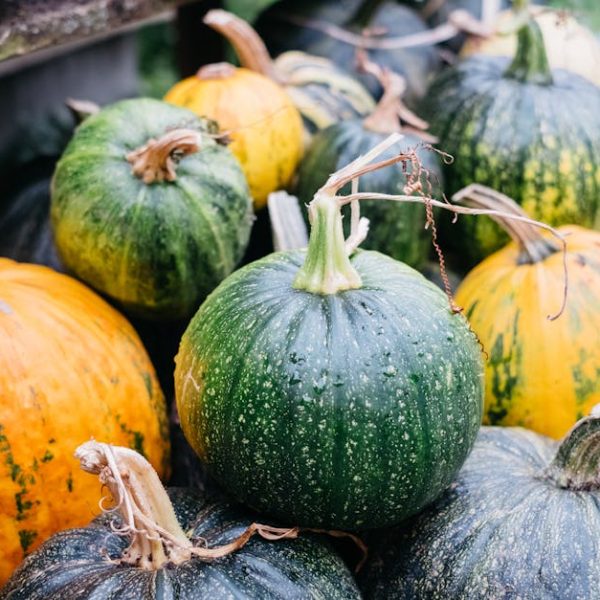Living with rats in your vicinity is frustrating and poses several health hazards. Dealing with these four-legged invaders can be a task, particularly if you’re not aware of what attracts them to a trap. When it comes to rats, food bait plays an integral role in trapping them. However, not just any food will do the trick. This article shares astonishing items from your pantry that serve as effective rat bait and some practical tips for using them.
Why Certain Foods Work as Effective Bait for Rats
To effectively lure rats into a trap, it is important to think like a rat. These clever rodents are primarily food-driven. They are drawn to foods incorporated with rich, strong aromas and high calories. Foods rich in proteins, fats, and sugars are particularly enticing to rats.
Another important factor to consider is the freshness of the food. Rats have an advanced sense of smell, hence stale or rotting food fails to attract them. They desire fresh, fragrant, and nutrient-dense foods. Here are common characteristics of effective rat bait foods:
- High in protein and fat,
- Strong aroma,
- Fresh and moist,
- Easy to carry – Rats prefer food that they can easily gnaw and carry off to their nests.
Best Practice: Always opt for fresh food items dripping with natural oils. The aroma and flavor profiles are more enticing to rats.
Unexpected Foods that Can Serve as Effective Rat Bait
Peanut butter, due to its high protein content and thickness, is a surprisingly competent rat bait. It’s not only easy for them to smell, but also the thick texture makes it difficult for rats to snatch the bait without setting the trap off.
Other surprising rat baits are bacon, chocolate, and dried fruit. These strongly scented foods can be easily spotted by rats and are irresistible to them. You might be amazed that these everyday items prove to be more effective than commercial rat baits.
- Peanut Butter: High in fat and protein. Its sticky texture allows for easy attachment to the trap.
- Bacon: An irresistible and powerful aroma that easily attracts rats.
- Chocolate: Rats are attracted to the sweetness of chocolate. It’s easy to mold onto traps.
- Dried Fruit: The sweet smell and taste of dried fruits such as raisins and apricots are enticing to rats.
Pro Tip: Smear or tie these foods securely onto the trap. The aim is to ensure rats will have to work to get to the bait, which increases the chances of trapping them.
How to Bait a Rat Trap for Best Results
How you bait a rat trap can significantly impact its success. Proper placement of the bait can make the difference. Place the bait in areas where you’ve noticed rat activity. Furthermore, safety should be your prime concern while handling and placing bait. Keep your hands clean to avoid leaving human scent on the traps, as this could deter the rats.
- Choose the right bait.
- Bait the trap before setting it.
- Place the bait in active zones.
- Use gloves when handling the trap and bait.
Best Practice: Carefully handle the bait and trap with gloves to avoid leaving a human scent.
Remember, outsmarting a rat is not an easy task. It requires careful planning, the right bait, and patience. So the next time you are baiting a rat trap, raid your pantry to find these startling and effective rat baits.
Differences between Rat and Mouse Bait Preferences
While both rats and mice are attracted to high protein, fat, and sugar content in foods, there are some differences in their preferences.
Generally, rats have a preference for fresh, meaty, and high-protein foods. They are also more suspicious of new sights, sounds, or foods in their environments. Hence, consistency and patience are key when it comes to rat trapping.
On the other hand, mice are more adventurous and have a preference for foods high in carbohydrates and sugar such as grains and fruit. They’ll often take the bait on the first night without hesitation.
Here are the bait preferences for both species:
| Rats | Mice | |
|---|---|---|
| Preferred Foods | Meat, fish, peanut butter | Grains, fruits, sweet items |
| Response to New Foods | Suspicious | Curious |
Pro Tip: When selecting bait, consider the unique preferences of the rodent you are trying to trap.
Common Mistakes in Baiting Rat Traps
Baiting a rat trap requires careful strategy and execution. Common mistakes can deter rats from taking the bait, thus making the trap ineffective.
One common mistake is overfilling the bait. Piling too much food onto the trap makes it easier for a rat to steal without setting off the trap. Remember that less is often more in this situation. Another mistake is changing the type of bait frequently. Rats are suspicious creatures and changing the bait often can make them wary.
Here are common mistakes and how to avoid them:
- Overfilling the bait: Use a moderate amount and securely attach it to the trap.
- Using spoiled or stale food: Always opt for fresh and fragrant food.
- Changing bait frequently: Stick with one type of bait instead of constantly switching.
Pro Tip: Develop a consistent baiting strategy. Rats are neophobic, meaning they are wary of new things. Therefore, suddenly switching the bait type or location might discourage them from the trap.
In conclusion, utilizing uncommon items like peanut butter, bacon, chocolate, and dried fruit can be a highly effective strategy in baiting rat traps. However, the key is in the consistent, measured, and safe application of the bait in line with the preferences and behaviors of the rat species you are trying to trap. And remember, while these foods are excellent at attracting rats, they should be kept securely stored in your home to deter infestation initially.
Key Takeaway:
- Food having rich, strong aromas and high calories, particularly those rich in proteins, fats, and sugars, successfully bait rats.
- The freshness of the food plays a vital role in luring the rats.
- Everyday items like peanut butter, bacon, chocolate, and dried fruit prove to be effective in trapping rats than commercial rat baits.
- Proper placement of the bait in active rat zones and handling the bait with gloves that avoid human scent increases the possibility of successful trapping.
- There are noticeable differences in the bait preferences between rats and mice. Rats prefer fresh and meaty foods, while mice are more inclined towards foods high in carbohydrates and sugar.
- Overfilling the bait and frequently changing the type of bait are common mistakes while baiting rat traps.
Rat infestation is an issue that can be managed effectively with the correct knowledge and strategies. Recognizing the effective baiting strategies and the bait preferences of rats could make a significant difference in trapping success. So, stay patient and consistent in your efforts to make your surroundings rodent-free.
FAQs
Q: What type of food should I keep away from my pantry to avoid rat infestation?
A: Try to limit availability to foods high in protein, fat and sugars – like peanut butter, bacon, chocolate and dried fruits – as these are especially attractive to rats. Ensure these foods are stored securely and not left out in accessible areas.
Q: How often should I replace the bait in a rat trap?
A: If you notice that the bait hasn’t been touched or the trap hasn’t been triggered after several days, it may be a good time to replace the bait. Remembers, fresh food works best to lure the rats.
Q: What are the safety precautions that I should consider when handling a rat trap?
A: Always use gloves while handling the trap and bait to avoid leaving a human scent, which could deter the rats. Also, if the trap is already set, handle it with extreme care to avoid accidental tripping.
Q: How can I make my bait more attractive to rats?
A: Foods with strong odours tend to be more attractive to rats. Try smearing or tying the food securely to the trap so that the rats would need to work harder to get to it, thereby increasing your chances of trapping them.
Q: Why should I avoid changing the type of bait frequently?
A: Rats are suspicious creatures. They tend to steer clear of new foods in their environment. Consistently changing the bait type can make them extra wary and less likely to approach the trap. Stick to one bait type for best results.
We hope this piece was useful, and we invite you to explore more posts on our website, and share this article with anyone you know who might find it helpful!






